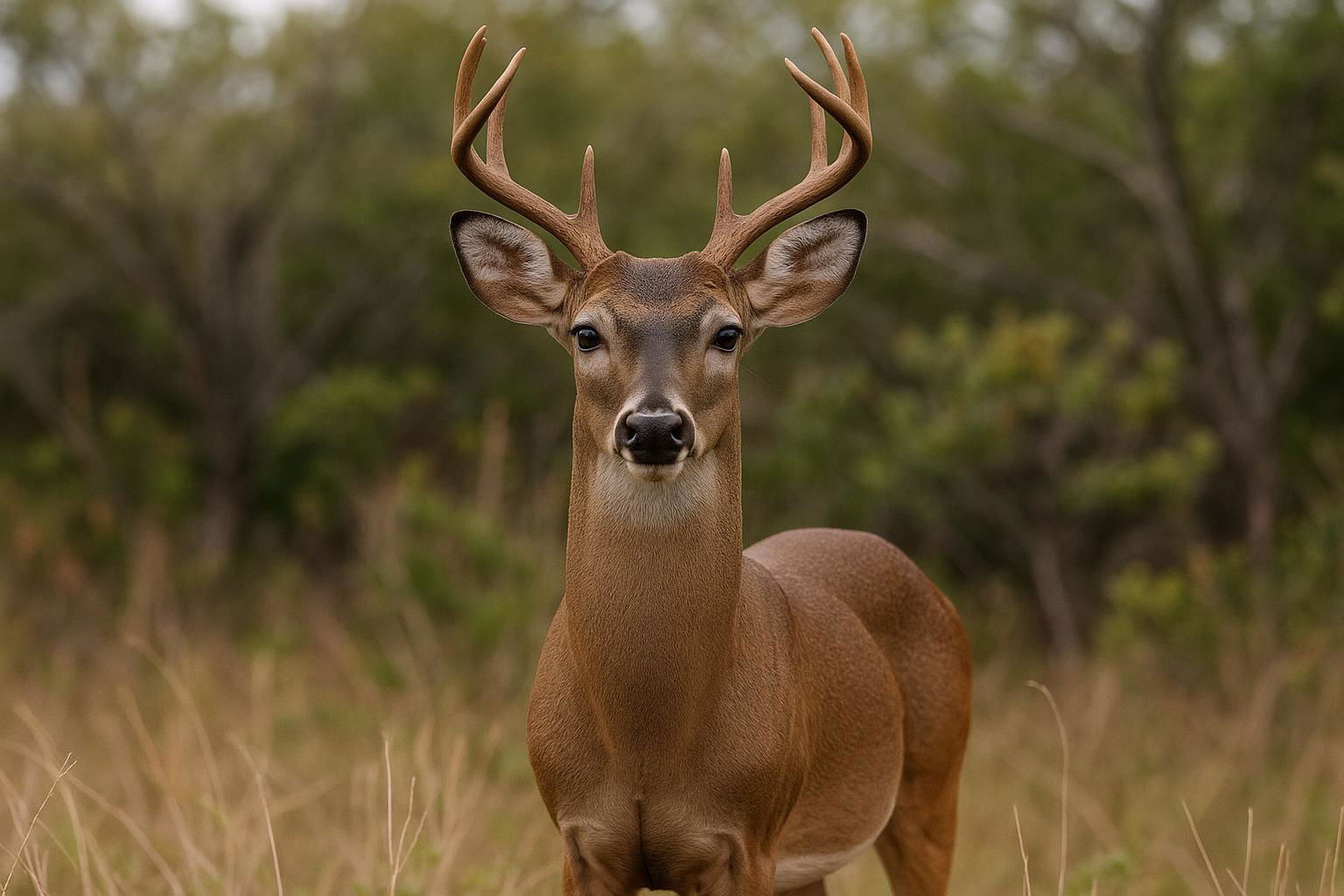
Southern
The Southern White-Tailed Deer, a distinct regional adaptation of the common white-tailed deer, inhabits the dense forests, swamps, and open grasslands of the Southeastern United States. Known for their adaptability, these deer have evolved to thrive in the warmer, more humid climates of this region. Compared to their northern counterparts, Southern white-tailed deer are often smaller in stature, a characteristic that aids in dissipating heat and moving more nimbly through dense vegetation.
Their coats vary seasonally, transitioning from a reddish-brown in the summer to a more muted grayish-brown during the winter months, providing excellent camouflage against predators in the diverse Southern landscapes. The underparts, throat, and tail remain a contrasting white year-round, giving them their namesake. Behaviorally, these deer are primarily crepuscular, foraging at dawn and dusk to avoid the midday heat while feasting on a varied diet that includes leaves, fruits, and agricultural crops. Socially, they often form loose groups, particularly females with fawns, while males may become more solitary outside the breeding season.
The Southern White-Tailed Deer's adaptability, keen senses, and elusive nature make it a vital component of its ecosystem, maintaining the balance between flora and fauna. Its presence also supports local economies through wildlife observation and regulated hunting activities, demonstrating the deer's cultural and ecological importance in the South.
Colors: Red-Brown, Tan-Brown

 All Species & Breeds
All Species & Breeds
 Highland Cattle
Highland Cattle
 Miniature Donkeys
Miniature Donkeys
 All Species Directory
All Species Directory
 Highland Cattle in Virginia
Highland Cattle in Virginia
 Miniature Donkeys in Texas
Miniature Donkeys in Texas












